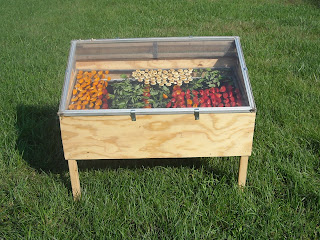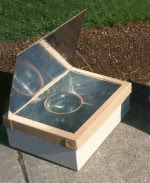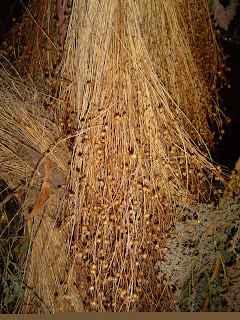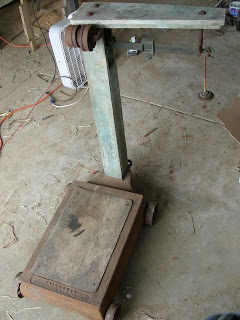Recipients are supposed to link to the giver's blog, choose five of their own favorite blogs (having less than 200 followers) to pass the award on to, leave a comment in each blog notifying the writer that you chose them, and paste the award icon on your blog.I think this is a great idea for two reasons. Number one, it encourages me to do what I have wanted to do since starting this blog; namely, give credit to the people and organizations that I think people should know about. Number two, there are only six blogs I follow that I read to gain information beyond updates on friends and family, and the award was passed on by one of them.
 So let the naming commence!I hereby dedicate as my Liebster Blogs The Gardenerd Blog, My Corner of Japan, Postilius, Turkeysong Blog, and Mojeji Farm's Blog.
So let the naming commence!I hereby dedicate as my Liebster Blogs The Gardenerd Blog, My Corner of Japan, Postilius, Turkeysong Blog, and Mojeji Farm's Blog.
Gardenerd.com is a project (company?) of Christy Wilhelmi, who offers classes, consulting, garden design, garden maintenance services, and speaks at events. As if it weren't enough that she does all of that, she is also a prolific blogger, posting on gardening topics so diverse I dare not even attempt to outline the range. Some of her posts center on events and region-specific garden tips for southern California, but many are pertinent to any growing situation. She's a treat to read, and is an excellent resource through the information she provides.
My Corner of Japan is written by a guy named Eric who does some wonderful documentation of yet more wonderful homesteading projects in Japan. Have I ever met Eric? I don't think so... He posted a comment on a post of mine once, and I have been reading his blog ever since. Eric's writing also covers a wide variety of topics. There's the cob oven, the parabolic solar cooker, the rice paddy, the rocket stove, and, of course, the kusakariki, not to mention his family's experience with the earthquake and Fukushima nuclear reactor issues. His posts are short and to the point, but don't lack in amusement or lessons.
Postilius is written by a couple who are friends of my sister. I would describe it as more of a sociologists' kind of commentary, but with child-raising as the focus. Their child, specifically. And it is most interesting to me both because they have a similar philosophy of parenting and my kind of humor. A look at the Positilius "labels" sidebar gives a good indication of their subject matter.
Turkeysong is the name of a homestead belonging to friends we met during our time in northern California. Steven and Tamara are two of the most incredible primitive-skills practitioners I know, and seem driven to share the information they have. Consequently the Turkeysong Blog, written by Steven, is not a weak, trivial, or watered-down thing that only takes up space. His choice of topic and degree of detail are not for everyone, but when he chooses to write about something it is because he's either already very knowledgeable or is currently learning a great deal about it. It's like The Economist of my blogroll. With our little boy running around, I can't usually make it through an entire Turkeysong post at one sitting. One disclaimer - while Steven is a committed and experienced gardener, his leeks are of uncommonly notable size and he is quite proud on that point. You've been warned...
Finally, Mojeji Ranch is the home of two generations of our Schrock friends. Roger and Carolyn have been raising beef and goats for a regional market for many years. Jon and Janelle Flory-Schrock joined them in the past couple of years, expanding the herd (of cattle), brood (of chickens), flock (of goats), confusion (of guinea fowl), drove (of pigs) and whatnot that now call Mojeji home. Incidentally, out of all these blogs, Mojeji's location is the only one I've physically visited. They post somewhat sporadically, and I follow to keep up with what they are doing, but I think that collectively they would have a vast store of knowledge to share if they chose to put it down on the blog. And I think they should :)
Cindy, who passed on the award to me, writes a blog that goes by the name of Homeplace Earth. Cindy is a tireless educator, and her writings are always inspiring to me. She's been living the life we are working into for a good long time, and in that way sets a good example of a practical pace to maintain joyful simplicity. I'd pass her a Liebster, too, but she's already got one, you see.
There you have it - my choice of online reading for the topics of sustainability, farming, and simple living.
As for the other shouts, I'm taking this opportunity to initiate another set of sidebars [coming in the next couple of days] to list some websites and organizations that I find pertinent to our work. As I mentioned above, it's something I have been wanting to do for a while. One of the benefits of the internet is the ability to form loose and flexible affiliations, associations, and webs of knowledge that can build on and enhance a person's interests. On that note, I'll end with one of my favorite Indigo Girls quotes from their song, Tether:
"I see this world battered, but not broken. See, there's a fallow heart, and it's waiting on a sowing hand. You can grow what you want, but one day it's gonna rise up, so plant what you need to make a better stand."
 So let the naming commence!I hereby dedicate as my Liebster Blogs The Gardenerd Blog, My Corner of Japan, Postilius, Turkeysong Blog, and Mojeji Farm's Blog.
So let the naming commence!I hereby dedicate as my Liebster Blogs The Gardenerd Blog, My Corner of Japan, Postilius, Turkeysong Blog, and Mojeji Farm's Blog.Gardenerd.com is a project (company?) of Christy Wilhelmi, who offers classes, consulting, garden design, garden maintenance services, and speaks at events. As if it weren't enough that she does all of that, she is also a prolific blogger, posting on gardening topics so diverse I dare not even attempt to outline the range. Some of her posts center on events and region-specific garden tips for southern California, but many are pertinent to any growing situation. She's a treat to read, and is an excellent resource through the information she provides.
My Corner of Japan is written by a guy named Eric who does some wonderful documentation of yet more wonderful homesteading projects in Japan. Have I ever met Eric? I don't think so... He posted a comment on a post of mine once, and I have been reading his blog ever since. Eric's writing also covers a wide variety of topics. There's the cob oven, the parabolic solar cooker, the rice paddy, the rocket stove, and, of course, the kusakariki, not to mention his family's experience with the earthquake and Fukushima nuclear reactor issues. His posts are short and to the point, but don't lack in amusement or lessons.
Postilius is written by a couple who are friends of my sister. I would describe it as more of a sociologists' kind of commentary, but with child-raising as the focus. Their child, specifically. And it is most interesting to me both because they have a similar philosophy of parenting and my kind of humor. A look at the Positilius "labels" sidebar gives a good indication of their subject matter.
Turkeysong is the name of a homestead belonging to friends we met during our time in northern California. Steven and Tamara are two of the most incredible primitive-skills practitioners I know, and seem driven to share the information they have. Consequently the Turkeysong Blog, written by Steven, is not a weak, trivial, or watered-down thing that only takes up space. His choice of topic and degree of detail are not for everyone, but when he chooses to write about something it is because he's either already very knowledgeable or is currently learning a great deal about it. It's like The Economist of my blogroll. With our little boy running around, I can't usually make it through an entire Turkeysong post at one sitting. One disclaimer - while Steven is a committed and experienced gardener, his leeks are of uncommonly notable size and he is quite proud on that point. You've been warned...
Finally, Mojeji Ranch is the home of two generations of our Schrock friends. Roger and Carolyn have been raising beef and goats for a regional market for many years. Jon and Janelle Flory-Schrock joined them in the past couple of years, expanding the herd (of cattle), brood (of chickens), flock (of goats), confusion (of guinea fowl), drove (of pigs) and whatnot that now call Mojeji home. Incidentally, out of all these blogs, Mojeji's location is the only one I've physically visited. They post somewhat sporadically, and I follow to keep up with what they are doing, but I think that collectively they would have a vast store of knowledge to share if they chose to put it down on the blog. And I think they should :)
Cindy, who passed on the award to me, writes a blog that goes by the name of Homeplace Earth. Cindy is a tireless educator, and her writings are always inspiring to me. She's been living the life we are working into for a good long time, and in that way sets a good example of a practical pace to maintain joyful simplicity. I'd pass her a Liebster, too, but she's already got one, you see.
There you have it - my choice of online reading for the topics of sustainability, farming, and simple living.
As for the other shouts, I'm taking this opportunity to initiate another set of sidebars [coming in the next couple of days] to list some websites and organizations that I find pertinent to our work. As I mentioned above, it's something I have been wanting to do for a while. One of the benefits of the internet is the ability to form loose and flexible affiliations, associations, and webs of knowledge that can build on and enhance a person's interests. On that note, I'll end with one of my favorite Indigo Girls quotes from their song, Tether:
"I see this world battered, but not broken. See, there's a fallow heart, and it's waiting on a sowing hand. You can grow what you want, but one day it's gonna rise up, so plant what you need to make a better stand."
8280









































